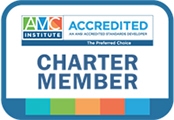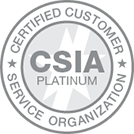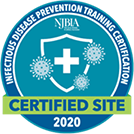In this economic era, it’s crucial for associations to continue generating non-dues revenues to keep them afloat. With more people finding it difficult to justify and pay their membership dues, it becomes vital for associations to find new ways to generate association revenue. The days when of relying on dues alone passed long ago.
Most associations are already using other programs to generate revenue. The most common non-dues revenue streams that associations use are:
- Annual sponsorships
- Conference and meeting fees
- Conference exhibitor and sponsorship item fees
- Internet advertising
- Webinars
- Merchandise
- Publication and newsletter advertising
- Digital information sales (online content, CDs/DVDs, or podcasts)
Your association may alreadybe using most of these, but take a look at what they’re not doing and think about the additional revenue you could be bringing in. True, it can be daunting to start a brand new program. Sometimes we get stuck in the rut of what we’ve always done — why change now if what we’re already doing works? But, we should all be thinking about starting another new source of revenue for our associations. After all, you can never have too many. Here are some tips to help you get started:
Brainstorm and have a plan. Your revenue programs should fit into the association’s overall goals and mission. Remember that these ideas are going to help your association advance in the future, which means it’s unlikely that new programs will grab hold and be successful overnight. Make a plan for your programs that will help them to grow over time.
Research and seek advice. At Association Headquarters, there are many associations working on a number of non-dues programs. This puts every one of our client partners in a unique position to feed off one another and gain new ideas on how to implement new programs. The AH meetings team is constantly trying to increase revenue from annual meetings. They use one another as a resource for almost everything they do. One association may have been selling certain sponsorship items for years, and another is looking to add some new items and opportunities.The association interested in adding new items has a wealth of resources at its disposal from that other group. Find out what worked and did not work for others before you begin.
Evaluate your options. Things like webinars or Internet advertising may be great for one association, but not work at all for another. It’s important to remember that there is no program that is universally fitted to every organization. Evaluate your ideas and how they would fit into your association. Ask yourself, “Would implementing these programs work with my available budget? Do I have the time and support available to launch these new programs? Is it realistic that I can keep the program going and moving forward?”
Gauge interest. Remember that almost every revenue stream relies heavily on someone else’s support. Don’t spend time and energy putting programs together without first assessing the interest. Don’t be afraid to ask your supporters for their opinions. This lets you truly assess their interests and also strengthens your relationship with them for the organization. Everyone loves to have their ideas heard; why not include the supporters you rely on in the decision-making process?
Use technology to your advantage. Obviously, technology seems to be increasing faster than ever. As soon as we learn one technology, there’s something better already there to replace it. While these ever-changing advances may seem scary, associations should be using technology to their advantage. For some medical meetings, it’s becoming more challenging to keep the registration revenue up, as more doctors and nurses are finding themselves unable to attend the meetings due to hospital budgets and restrictions. Associations such as the Dermatology Nurses Association (DNA) have countered this by implementing online webinars and live broadcasts from their meetings. Those who are unable to physically attend the meeting are able to pay a smaller registration fee to attend these online sessions. Some sessions even offer the same continuing education credits attendees would get at the meeting. The beauty of this technology is that the members are still gaining valuable education and resources, and the association is still seeing a revenue stream from the online sessions.
Market your programs. We already know that our ideas and programs aren’t going to start overnight and be immediately successful. Make sure you’re doing everything you can to market your new programs! Here again is another way to use technology to your advantage: Blast emails or post on Facebook, Twitter, or LinkedIn… whatever you do, get your message out there! Just make sure you are spreading the word and marketing well.
Track your success. Your ideas may seem to be working but take a look at your program’s successes and failures over the first year. You need to make sure that your new program is really generating the revenue you anticipated, and, most importantly, that it is “paying for itself” for any costs you incurred during the launch. Don’t get stuck in a program that’s truly not working for your association.
Don’t forget about your members. With all this in mind, remember not to give up on the revenue from membership dues! Maybe your association relies more on income from its meeting than its membership dues. But don’t forget that if it weren’t for your members, your association probably wouldn’t exist. Don’t give up on finding new ways to “sweeten the deal” for your members or gain new membership. Ultimately, your members are going to play a huge part in the organization’s future — so don’t count them out.




